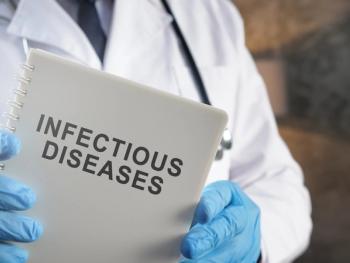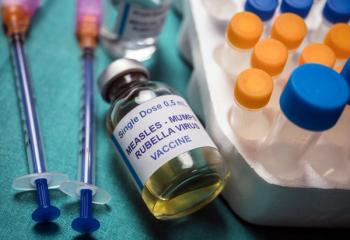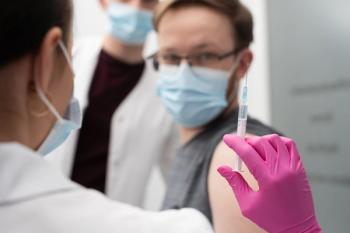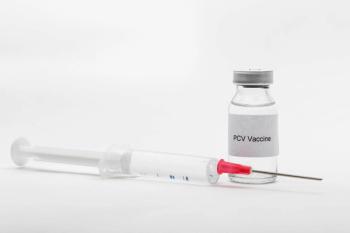
Doxycycline Postexposure Prophylaxis Reduces Bacterial STI Rates With HIV PrEP
Rates of chlamydia and syphilis declined in adults taking HIV PrEP.
Receipt of doxycycline postexposure prophylaxis (doxyPEP) led to “substantial” declines in incidence of chlamydia and syphilis and modest declines in incidence of urethral and rectal gonorrhea in individuals taking pre-exposure prophylaxis (PrEP) for HIV, according to research results published in JAMA Internal Medicine.1
In a retrospective cohort study, researchers evaluated electronic health records from a group of adult patients at Kaiser Permanente Northern California who were dispensed
The primary study outcomes were cases of incident chlamydia, gonorrhea, or syphilis, measured as quarterly STI positivity. STI trends were evaluated for the full cohort, and among patients taking doxyPEP, investigators calculated rate ratios to compare mean quarterly STI positivity from 24 months prior to 12 months after doxyPEP initiation.
The cohort included a total of 11,551 adults who received HIV PrEP during the study period (mean age, 39.9±12.1 years; 95.1% men, 44.7% White). Within this group, 19.5% or 2253 individuals received doxyPEP. During the study period, the quarterly number of individuals dispensed doxyPEP increased from 85 to 650 to 605 in Q4 of 2022, Q3 of 2023, and Q4 of 2023, respectively. Median length of follow-up after first doxyPEP receipt was 5.7 months (interquartile range [IQR], 2.9-8.4 months).
READ MORE:
A total of 98.9% of those in the doxyPEP group were men; 48.6% of the group had a diagnosis of a bacterial STI in the 12 months prior to doxyPEP initiation (30.2% chlamydia, 29.5% gonorrhea, 5.3% syphilis). DoxyPEP recipients were older and enrolled in the Kaiser Permanent Northern California HIV PrEP program for longer compared with those who did not receive doxyPEP (mean age, 40.4±10.8 years vs 39.8±12.4 years; mean enrollment, 4.2±2.8 years vs 3.4±2.6 years). A higher proportion of the doxyPEP group were commercially insured (92.8% vs 88.9%).
Within the doxyPEP group, 87.4% received 30 doxycycline 100 mg pills with their first prescription, while 5.1% and 7.5% received fewer than 30 and more than 30 pills, respectively. Median number of fills per recipient was 2 (IQR, 1-3 fills). Among the 52.2% of individuals with multiple doxyPEP fills, median number of days between fills was 52 (IQR, 28-89 days), with a median of 6.5 doses in possession per month (IQR, 4.3-10.6 doses).
When evaluating STI incidence in the doxyPEP group, investigators found that quarterly chlamydia positivity ranged from 7.9% to 11.6% in the 24 months before initiation, and from 1.8% to 2.2% in the 12 months after initiation. Mean chlamydia positivity declined from 9.6% to 2.0% before and after doxyPEP, with separate statistically significant declines for rectal, pharyngeal, and urethral chlamydia (rate ratio [RR], 0.18, 0.16, and 0.25, respectively).
Quarterly gonorrhea positivity in the 24 months before doxyPEP ranged from 7.6% to 11.3%, and from 7.8% to 10.7% in the 12 months after doxyPEP, with an overall decline in mean gonorrhea positivity from 10.2% to 9%. Investigators noted statistically significant declines for rectal and urethral gonorrhea (RR, 0.81 and 0.56, respectively), but not for pharyngeal gonorrhea (RR, 0.91).
Quarterly positivity for syphilis ranged from 1.3% to 2.1% in the 24 months before doxyPEP and from 0.2% to 0.6% in the 12 months after doxyPEP, with a decline in mean syphilis positivity from 1.7% to 0.3% before and after doxyPEP initiation.
Across the full cohort, quarterly chlamydia positivity during the pre-doxyPEP period was higher in individuals who were subsequently dispensed doxyPEP compared with those who were never dispeansed doxyPEP, although no significant trend in either group was noted. During the post-doxyPEP period, positivity of chlamydia declined from 10.2% in Q4 or 2022 to 2.0% in Q4 of 2023, with a mean change per quarter of -31.8%.
Quarterly gonorrhea positivity was also higher during the pre-initiation period, increasing slightly from 6.9% to 9.9% in Q1 of 2021 to Q3 of 2022; mean change per quarter was 4.3%, and positivity remained higher post-doxyPEP implementation. Quarterly syphilis positivity was similarly higher among individuals who subsequently received doxyPEP vs those who did not, although no significant trend was noted in either group. During the post-implementation period, positivity declined from 1.3% to 0.3%, for a mean change per quarter of -29.3%.
Study limitations include the non-representative nature of the study cohort compared with the general public, a lack of availability on participant gender identity and sexual orientation, and the reliance on laboratory results to detect new cases of syphilis.
“DoxyPEP may offer substantial benefits for reducing population-level STI transmission with broader implementation,” the researchers concluded.
READ MORE:
Reference
1. Traeger MW, Leyden WA, Volk JE, et al. Doxycycline postexposure prophylaxis and bacterial sexually transmitted infections among individuals using HIV preexposure prophylaxis. JAMA Intern Med. 2025 Jan 6. doi:10.1001/jamainternmed.2024.7186
Newsletter
Pharmacy practice is always changing. Stay ahead of the curve with the Drug Topics newsletter and get the latest drug information, industry trends, and patient care tips.





















































































































































